Portage camping is a fantastic way to explore the backcountry and easily my favourite way to enjoy more of the outdoors.
For the average camper, however, portage camping can seem pretty intimidating. Packing everything you need into a canoe and paddling into the wilderness… Navigating waterways, and overland trails… Absolutely it can seem daunting!
It actually harkens back to the days of the early pioneers of Canada and America. But, these days, portage camping is accessible to almost all levels of campers thanks to backcountry outfitters, and more information being available.
So, if you’re interested in trying it out, here’s exactly what you need to know about portage camping from someone who’s been doing it for the past 10+ years!
Article Contents:
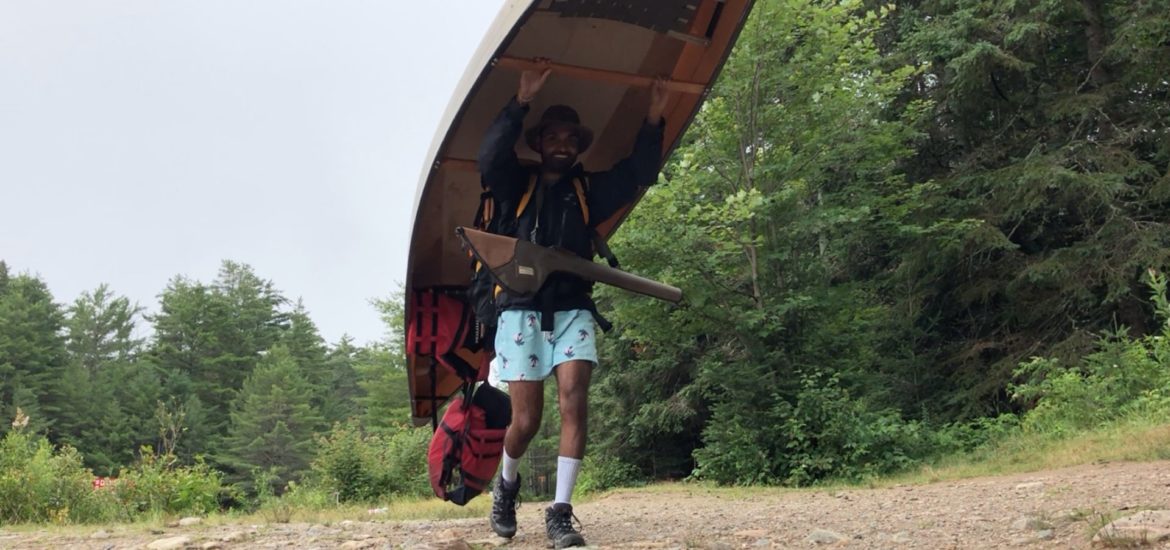
What is a Portage?
To start off, we need to first define what is a portage and what is portaging?
In the backcountry, a portage is a path overland connecting two waterways. Portaging is the act of carrying a watercraft (typically a canoe) and its contents across land between two waterways.
This can also mean navigating overland when a particular section of a waterway is impassable, such as bypassing rapids in a river, a waterfall, or a dam (be it beaver-made or man-made).
How to Find a Portage?
In the pioneer age, adventures would regularly create and mark new portage routes as they explored each new frontier.
Nowadays, regularly used portage routes in parks are clearly marked with signs. Portages are depicted on backcountry maps as dotted lines, which also indicate the total distance of each portage.
But, if a new obstacle becomes apparent between you and your destination, such as a dried up creek in the summer, or a fallen tree after a windstorm, you might have to blaze a new portage trail.
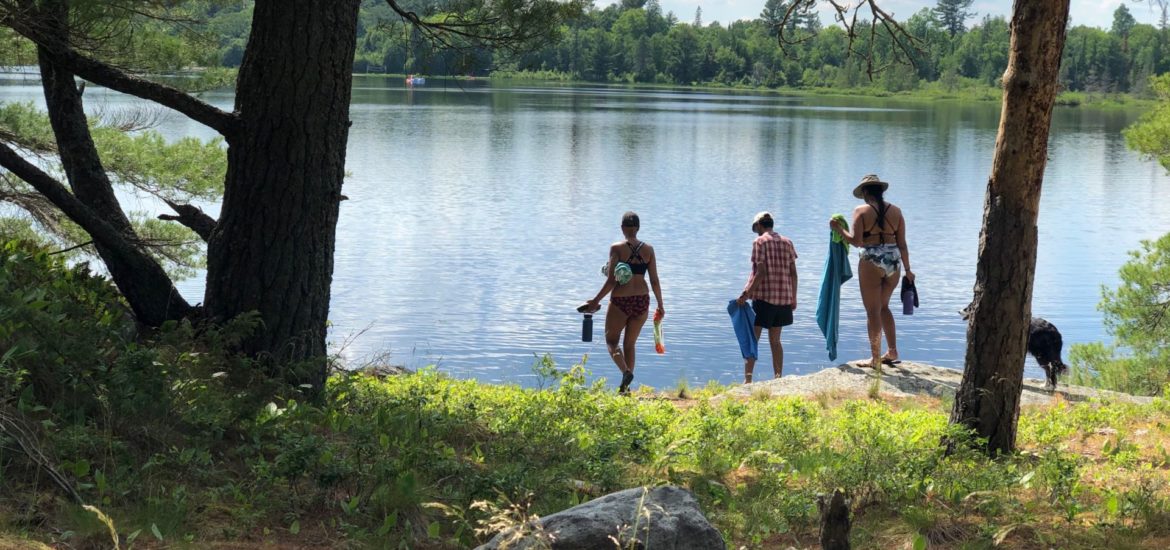
What are the Advantages of Portage Camping?
There was a time where I thought portage camping was way too intense for my abilities. However, after my first portage trip in Algonquin Park in Ontario I was hooked!
That’s because portage camping offers so many advantages compared to traditional car camping and even hike-through camping.
Actually Experience the Wilderness
Probably the most enjoyable part of portage camping is the ability to explore deeper into the backcountry, far away from large crowds, to be a lot closer to nature.
By using a canoe, and traversing between lakes and rivers, you can explore parts of parks that people seldom visit. These remote areas are less impacted by humans, and are true wilderness experiences.
The diversity of flora and fauna can be greater, which means you can see more plants and animals endemic to certain areas. This is especially true for animals that typically keep distant from human activities, so you might actually see beavers and birds, or large animals such as deer and moose.
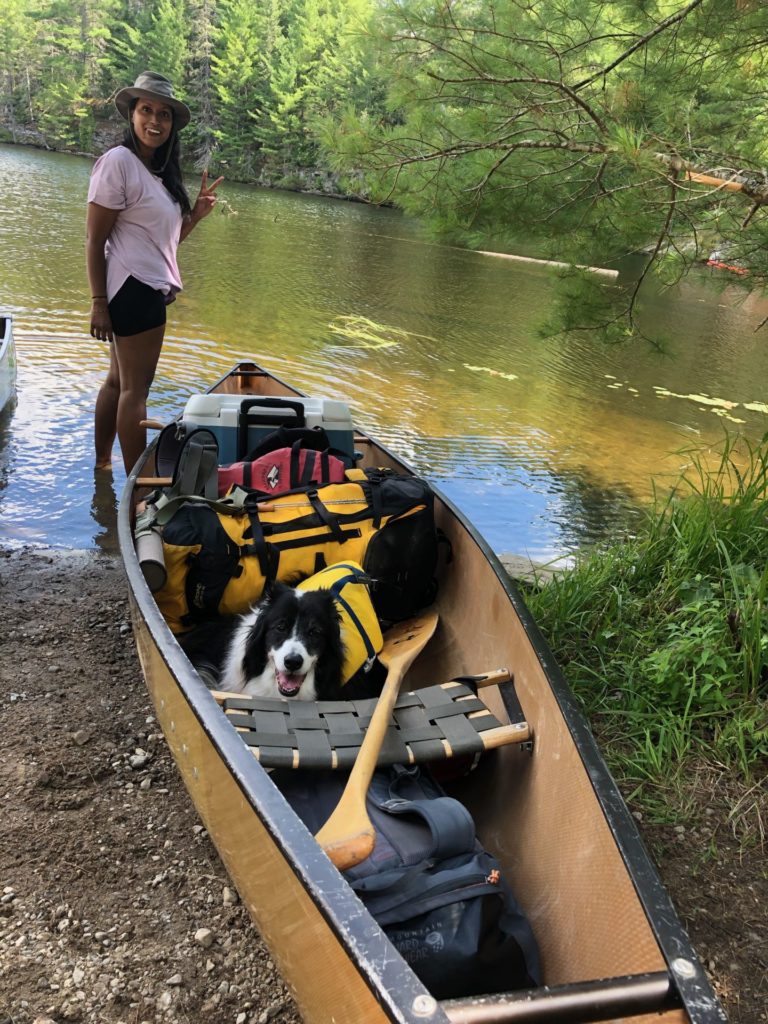
Watercraft Does the Heavy Lifting
Traditional backcountry camping relies on hauling all of your camping equipment in your backpack and hiking to your camp site. This can be fairly exhausting especially if it’s a long distance away and your camping gear weighs a lot.
However, in portage camping, the watercraft does all the heavy lifting (for the most part). You can actually pack more things that might seem counter-intuitive for the backcountry such as a large cooler, and even camp chairs.
It takes far less effort to paddle with all your heavy camping equipment than hiking and hauling it all the way. However, once you get to a portage, you’ll need to remove everything from your canoe and carry them across land.
But, if you plan your routes efficiently, you can minimize the number of portages and stick to paddling your way to your campsite.
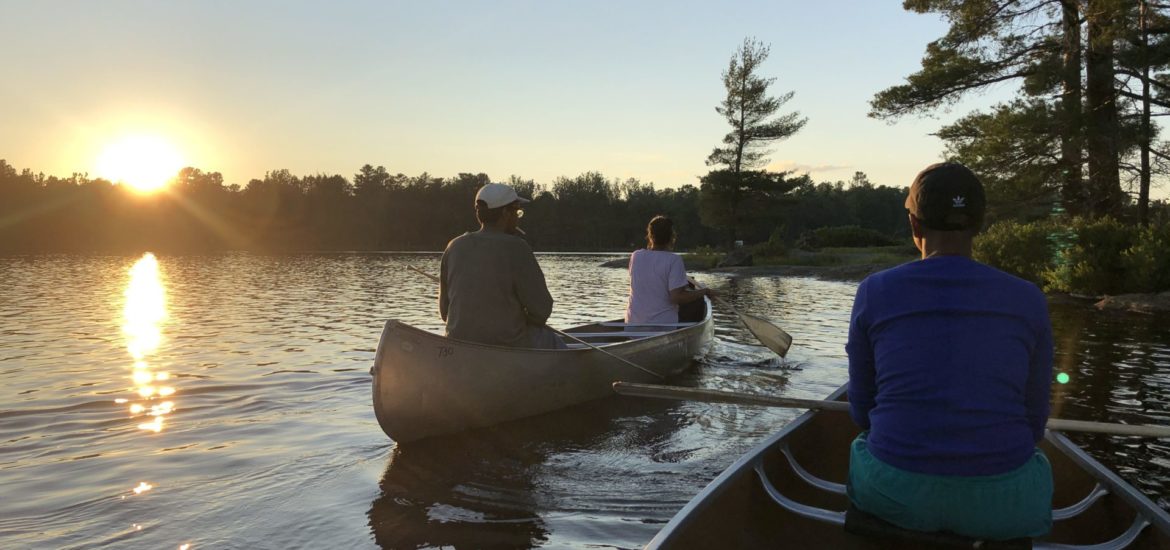
Waterways Are Faster (Sometimes)
When it comes to speed, utilizing a canoe and waterways can reduce the time it takes to get to a campsite or backcountry location when compared to hiking.
That’s because the average speed of hiking with a full backpack is typically between 2 to 4 km/h, depending on the terrain [Reference].
However, the average speed of tandem paddling across a lake with your camping equipment is typically between 4 to 6 km/h depending on favourable or unfavourable wind conditions [Reference].
But, I have to warn you… Paddling across a lake with a strong head wind or against the current in a wide river is absolutely atrocious. It can feel like you’re moving at a snail’s pace and can be very tiring.
So, if you’re planning on camping in an area with high wind, and a majority of your paddling is against the wind, or you need to paddle up-river, you might want to ditch the paddles for some walking pole!
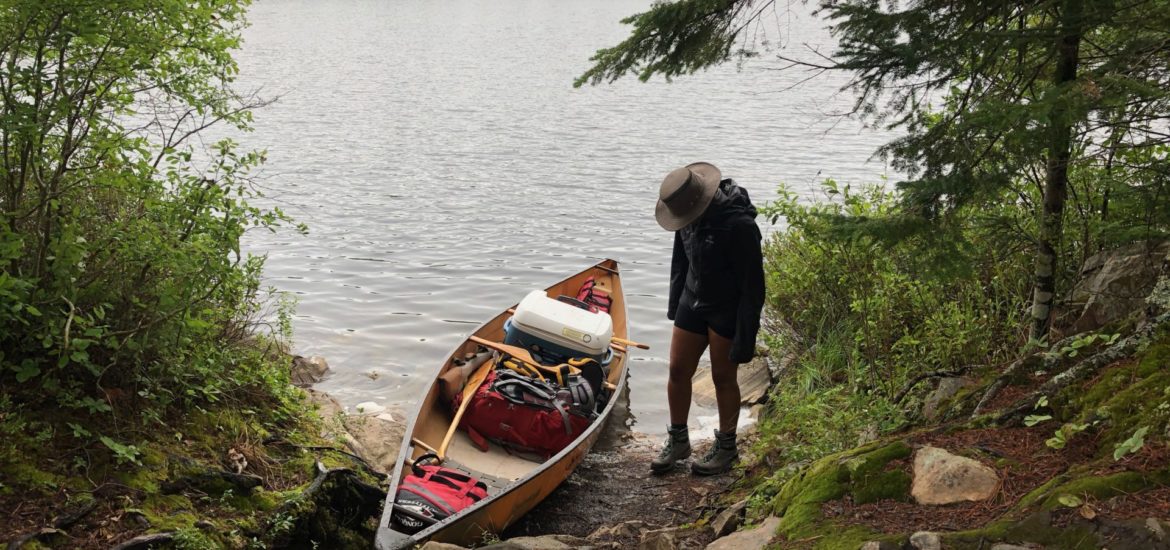
What are the Disadvantages of Portage Camping?
Portage camping isn’t all sunshine and rainbows. There are certainly a few key disadvantages of portage camping.
However, personally I think the advantages far out-weigh the disadvantages which is why I prefer portage camping whenever I can.
Renting Watercraft
Most backcountry campers like myself don’t own a canoe or kayak. Instead, we contact a local outfitter and rent our watercraft.
Rental costs can be fairly significant and can depend on the model of the watercraft. For canoe rentals, there are two main types to rent: glass-fiber and Kevlar. Both are strong and light-weight but Kevlar is slightly more light-weight which makes it easier to maneuver, both on the water and over-land.
Some outfitters provide pick up and drop-off service at your launch point, however some do not. Instead, you’ll need to stop at the outfitter, strap the canoe to your roof, and then drive it to your destination.
This can add a bit more time and complication to your camping trip, especially if you have a large group.
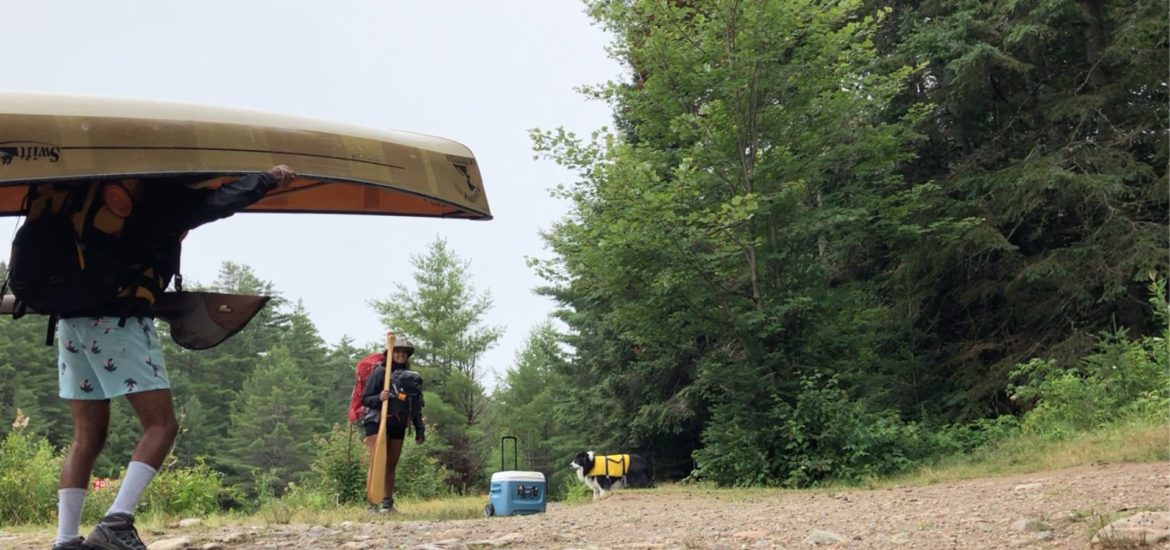
Carrying Watercraft
Carrying your canoe or kayak over-land is the whole purpose of portage camping. It’s not easy, but it’s also not hard. It just takes time and effort to unload, transport your gear across land, reload your canoe, and then re-launch.
A single person can definitely lift and carry a light-weight canoe across a portage without much issue. Personally, I find the hardest part is the initial lift and positioning of the canoe over your head and onto your shoulders.
Thankfully, most portage canoes have a built-in yolk which is design to rest on your shoulders. The yolk transfers the canoe weight onto your shoulders and back. This frees up your hands and arms to stabilize the canoe as you maneuver along the trail.
Individuals who aren’t carrying the canoe carry the rest of the gear across the portage. If you have a lot of gear this can mean making multiple trips back and forth. My wife and I strategically pack our gear so that we don’t have to keep going back and forth for individual items.
I usually carry my backpack when I’m carrying the canoe. She carries her backpack, the food barrel, our fishing gear, the paddles, and brings our dog.
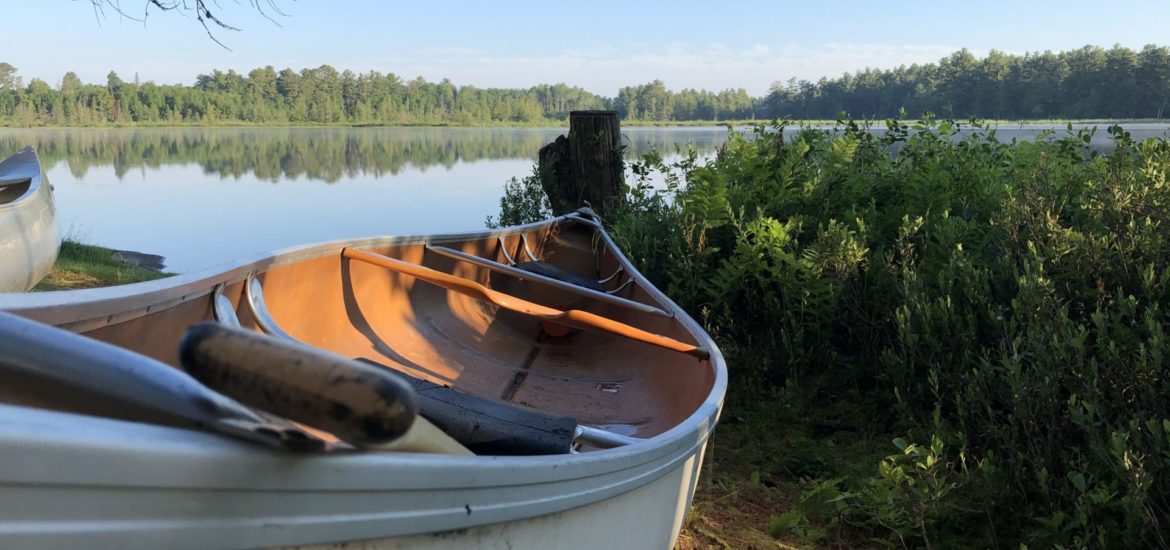
Multiple Long Portages
To get to secluded campsites and regions within parks, it sometimes takes multiple long and arduous portages. And, just like I mentioned before, every portage means unloading, carrying, and then reloading your gear.
Each additional portage adds time to your day. Short portages can be tackled fairly quickly. But multiple long portages can really zap your energy.
Personally, the longest portage I’ve ever done was 1100 meters. On a sizzling summer day in buggy Ontario it was pretty tough.
Would I purposely plan another backcountry trip like that, no. Would I ask my wife to portage over 1 km for a secluded campsite, hell no! She’d probably smack me with the paddle if we had to portage that far.
For all our trips, we prefer longer paddles than multiple long portages. Just remember, in some regions and parks you’ll be stuck paddling AND portaging long distances. So, don’t bite off more than you can chew!
Risk of Capsizing
Perhaps the biggest risk of portage camping, which is always in the back of my mind when I’m on the water, is capsizing your boat.
Yes, you might loose all your gear depending on where you capsize, but the largest danger is the risk of drowning.
In windy conditions, a large lake can easily become extremely choppy. Large waves can quickly overwhelm you and water can start pouring into your boat faster than you can bail it out.
Alternatively, an improperly loaded canoe or a quick shift in the balance can result in it tipping over. It can happen in an instant, and the canoe can easily strike you in the head while it’s flipping over leaving you unconscious.
For portage camping, it’s extremely important that you:
- always wear a lifejacket
- are a decent swimmer
- know how to properly maneuver a canoe
A deficiency in any one of these can be disastrous and potentially deadly. Personally, I’ve flipped in a canoe while fishing and it was very difficult to swim to shore while pulling a capsized canoe; and I was only 40 meters from shore!

Inexperience Can Be Deadly!
In 2017, a group of three inexperienced canoers capsized in the middle of a lake in Algonquin Park in Ontario in less than ideal conditions [News article link].
The heroic actions of a kayaker who just happened to be passing by saved two individuals, but sadly one person did not survive.
This tragedy highlights the need to be fully aware of all the risks while in the backcountry, and getting the proper training and experience before attempting any challenging activity.
4 Important Portage Camping Tips
After dozens of camping trips, hours upon hours of paddling, and hiking kilometers of portages, there’s a few key tips you should know before tackling your first portage camping trip.
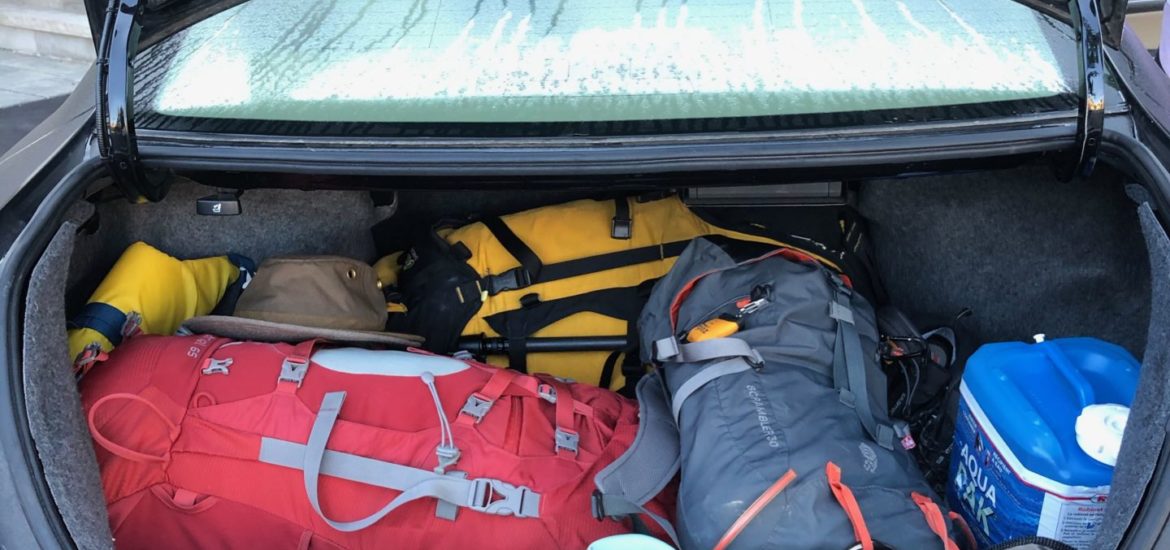
1. Pack as Light as Possible
A lot of folks prefer car camping because they can load up their car with everything they need, and then some, and not have to worry about carrying any of it.
Well, you really can’t do that when portage camping. Pretty much everything you need has to have a purpose. And luxury items might have to stay at home.
- A heavy pack, or excessive amounts of gear will slow you down both on the water and hiking across each portage.
- I recommend limiting the carrying capacity per person to 60 pounds for each portage. If you end up bringing more gear, that means you’ll end up making more trips back and forth on each portage.
On a recent trip, I saw someone pack and bring a brush and dust pan, presumably to keep their tent spotless… You don’t need to bring stuff like that!
Pro-tip: Only pack and bring backcountry camping essentials. Don’t bring glass or heavy metal containers. Pack the appropriate amount of clothes. Try not to bring a large cooler if you don’t need to. Everything you bring must be packed out with you, including garbage.
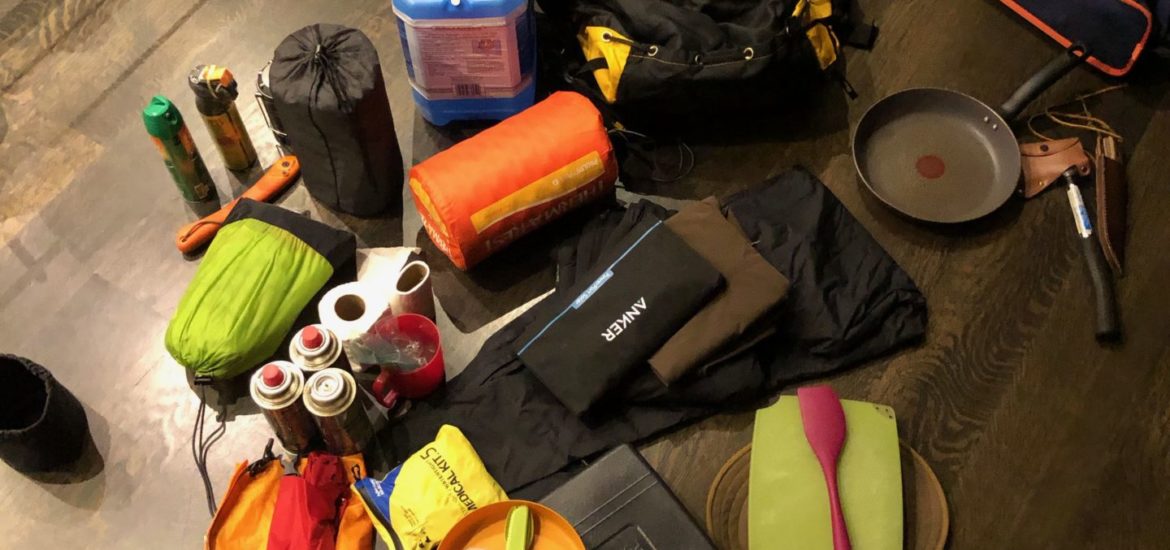
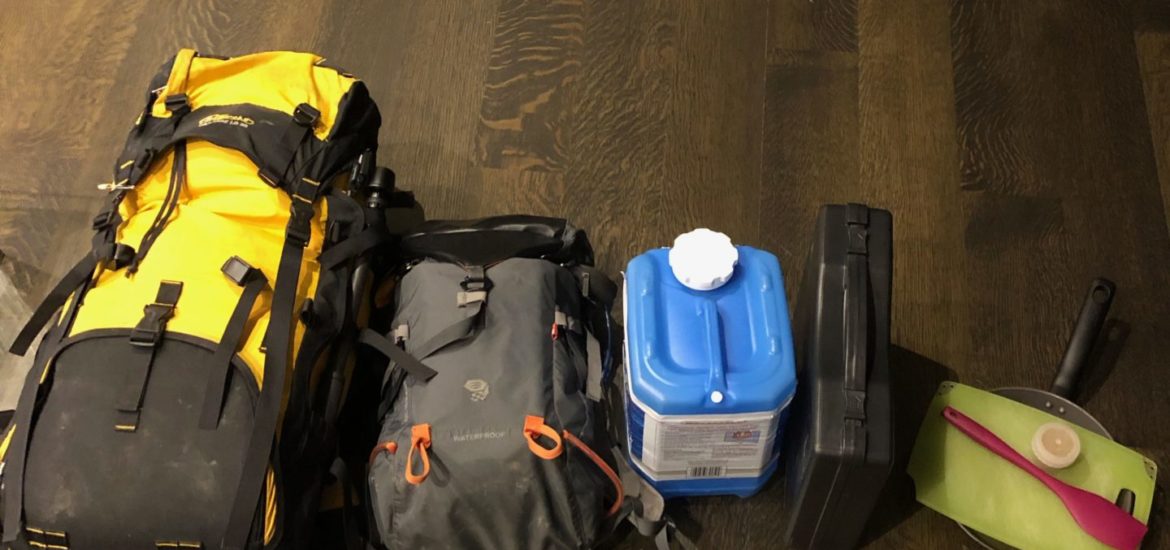
2. Pack as Compact as Possible
Big and bulking packs are awful to carry in a canoe and hiking across a portage. They take up a lot of space and limit your carrying capacity.
- Sleeping bags, pillows, excessive clothes, and tarps and the most common pieces of camping equipment that take up a lot of space.
I recommended investing in a compression sack to squeeze out all of the air in your sleeping bag. You can do the same for a small pillow, however a blow-up pillow is a much better choice for portage camping.
For clothes, it’s not a fashion show out in the woods. You don’t need an outfit change every 12 hours, so try to limit what clothing items you bring.
Pro-tip: For summer camping trips, I reuse my swimming shorts as my regular shorts and let them dry off throughput the day.
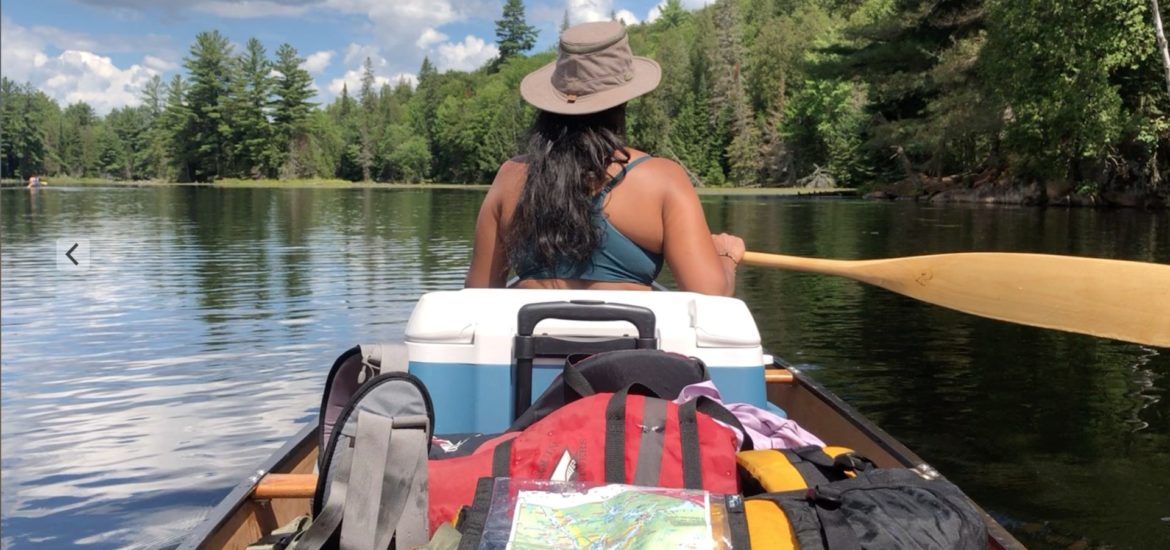
3. Slowly Graduate to Longer Portages and Further Campsites
Just like there is a graduated licensing program for new drivers, I believe there should be a similar program in place for backcountry camping, especially portage camping.
- Jumping in too fast and too deep can be both discouraging and dangerous.
- The experience might put you off entirely from exploring the backcountry, or put you in a life-threatening situation.
I don’t want that to happen to anyone. Instead, I recommend easing yourself into portage camping. Start off my renting a canoe and becoming a proficient paddler. Then perhaps book a campsite where you only need to paddle to, without any portages. Finally, start incorporating a portage or two to get to your destination.
This way you can learn from each gradual step, and then unlock the full potential of portage camping safely and effectively!

4. Prepare for Backcountry Challenges!
The three primary challenges to backcountry camping trips, including portage trips, revolve around water, weather and wildlife.
If you can learn how to master each of them, you can have an overall better backcountry camping experience.
Pro-tip: Check out my article backcountry camping tips to help prepare yourself for your next portage camping adventure!
This article contains affiliate links, which help support this blog at no cost to you!
